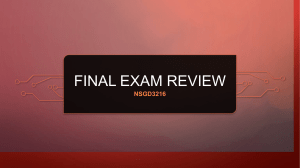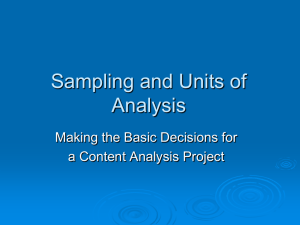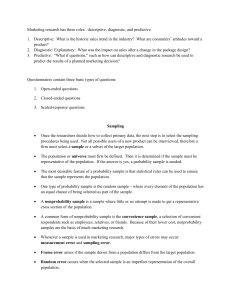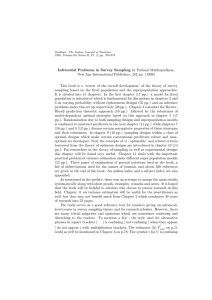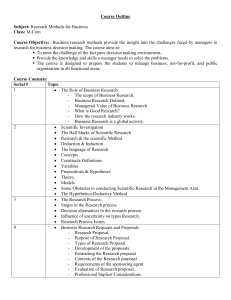Soc206a Final Exam Information
advertisement
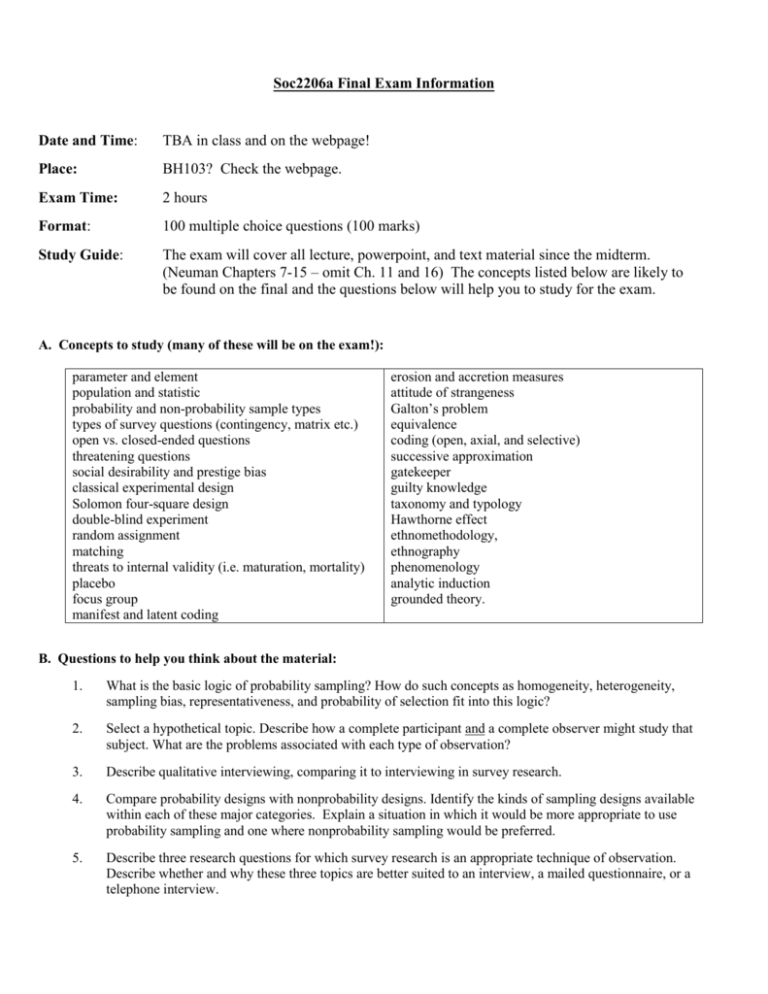
Soc2206a Final Exam Information Date and Time: TBA in class and on the webpage! Place: BH103? Check the webpage. Exam Time: 2 hours Format: 100 multiple choice questions (100 marks) Study Guide: The exam will cover all lecture, powerpoint, and text material since the midterm. (Neuman Chapters 7-15 – omit Ch. 11 and 16) The concepts listed below are likely to be found on the final and the questions below will help you to study for the exam. A. Concepts to study (many of these will be on the exam!): parameter and element population and statistic probability and non-probability sample types types of survey questions (contingency, matrix etc.) open vs. closed-ended questions threatening questions social desirability and prestige bias classical experimental design Solomon four-square design double-blind experiment random assignment matching threats to internal validity (i.e. maturation, mortality) placebo focus group manifest and latent coding erosion and accretion measures attitude of strangeness Galton’s problem equivalence coding (open, axial, and selective) successive approximation gatekeeper guilty knowledge taxonomy and typology Hawthorne effect ethnomethodology, ethnography phenomenology analytic induction grounded theory. B. Questions to help you think about the material: 1. What is the basic logic of probability sampling? How do such concepts as homogeneity, heterogeneity, sampling bias, representativeness, and probability of selection fit into this logic? 2. Select a hypothetical topic. Describe how a complete participant and a complete observer might study that subject. What are the problems associated with each type of observation? 3. Describe qualitative interviewing, comparing it to interviewing in survey research. 4. Compare probability designs with nonprobability designs. Identify the kinds of sampling designs available within each of these major categories. Explain a situation in which it would be more appropriate to use probability sampling and one where nonprobability sampling would be preferred. 5. Describe three research questions for which survey research is an appropriate technique of observation. Describe whether and why these three topics are better suited to an interview, a mailed questionnaire, or a telephone interview. 6. Describe a study for which the secondary analysis of existing statistics is the appropriate research method. What source would you use? What problems might you encounter, and how would you resolve them? 7. Describe how coding and memoing are used in qualitative analysis. 8. Explain what is meant by internal and external validity. 9. Describe the oral history method and explain when it would be used. 10. What is the Hawthorne effect? What is its significance to experimental research?

